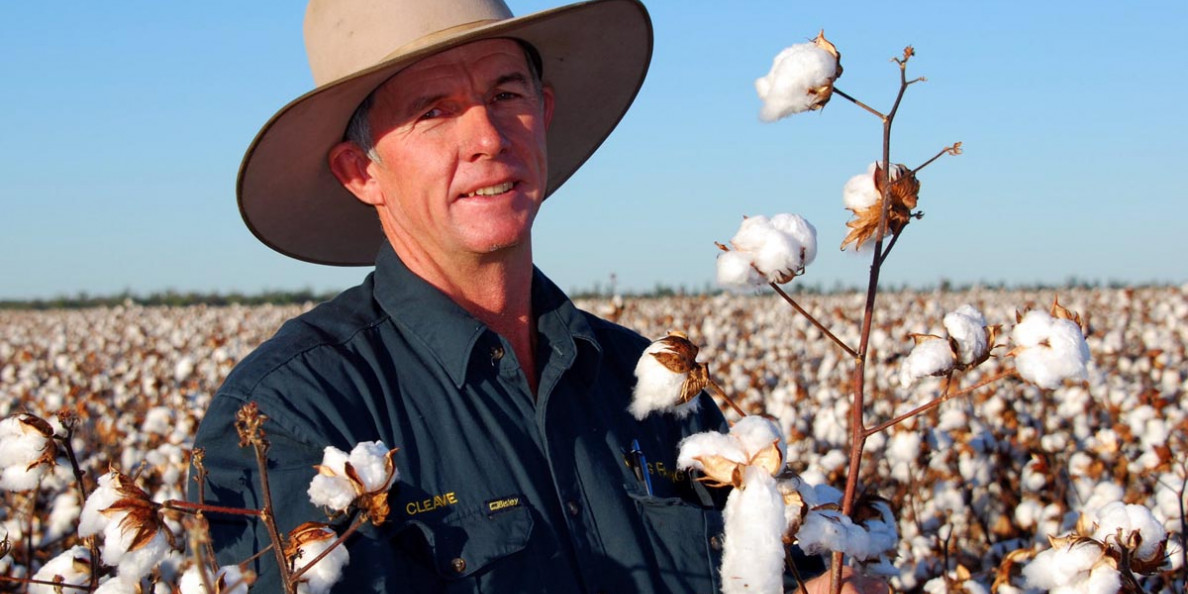Beijing's "unofficial" snub to Australia's cotton producers last week has frozen all export trade activity with China, yet remarkably lint values have actually strengthened.
As China, the world's largest importer, buys increasing volumes of US cotton as part of its Phase One trade commitment on agricultural imports with Washington, stronger international values lifted spot prices for next season's Australian crop from an average $525 a bale to $532 in the past week.
However, the local cotton industry is bracing for leaner conditions ahead after officials confirmed Chinese spinning mills had been ordered to halt Australian lint purchases because of "apparent changes to export conditions to the People's Republic of China".
With China no longer bidding, basis premiums for Australia's high grade crop slipped from $51/bale to $34 in a week, and are down from highs of about $120/bale a year ago.
The rush is now on to bolster export relationships in other parts of Asia, where fortunately demand has risen steadily in recent years.
More than 60pc of Australian cotton crop would normally sell to China for about $800 million in an average year.
The Chinese have even bought 60pc in big cotton seasons when the harvest tally has hit 4m-plus bales, delivering export windfalls worth about $2b.
Reprisals
However, in the latest of a series of agricultural trade setbacks with our biggest farm sector market, Beijing has effectively told spinning mills they must pay a 40 per cent tariff if they keep buying Australian cotton.
That move coincided with Chinese steel makers also being advised to "defer" orders of Australian thermal and metallurgical coal.
Diplomatic and trade observers noted Beijing's covert trade actions struck just days after a meeting of the Quadrilateral Strategic Dialogue group (Japan, Australia, India and the US), which Chinese propaganda agencies have called the "Asian NATO".
The "Quad" is generally viewed as running a "China containment" strategy, in particular challenging China's assertive maritime territorial claims in the South China Sea which flout the United Nations Convention on the Law of the Sea.
Like farmers Australia-wide, cotton growers and traders have been uneasy for months about this year's spike in farm commodity bans and diplomatic tensions involving China.

Adam Kay
However, until quite recently Chinese textile activity and demand for Australia's high grade lint was gaining momentum after March's coronavirus lockdowns as China returned to near-normal economic conditions.
The real losers will be the Chinese spinners - Adam Kay, Cotton Australia
Cotton Australia chief executive officer Adam Kay said export merchants would have to work much harder to market the national crop.
"At the end of the day this will have an impact on the industry, but our cotton will find a home and we still have some lead time to play with before picking season arrives in April," he said.
Mr Kay also noted, officially, there had been no comment from the Chinese government about Australian cotton being excluded from its 890,000 tonne a year tariff-free import quota.
RELATED READING
"Fortunately there haven't been claims of Australian breaching WTO rules or anti-dumping action which caught the barley and wine industry by surprise," he said.
However, mills had been told verbally by China's National Development Reform Commission Australian imports would cop a sliding tariff which could add about 40pc to the cost of any import orders.
Australian trade officials in Beijing and Canberra have worked closely with cotton sector players to evaluate the seriousness of the "unofficial" ban, but no feedback from Chinese authorities was forthcoming yet.

"The real losers will be the Chinese spinners," Mr Kay said.
"They really do value our fibre quality and reliability and we've received messages expressing their regret and disappointment about the situation."
Cotton merchants have been left dangling, unsure how long the new import hurdles will stay and uneasy about whether tariffs will apply to 2021 and 2022 season cotton already forward sold to mills.
"Because nothing's official it's not clear if contracts will be honoured," said Australian Cotton Shippers Association chairman Michael O'Rielley who works with Olam International's Queensland Cotton.
The sudden change in the trade relationship was disappointing because China had been a fairly consistent market for decades, and more likely to pay premiums than other South East Asian buyers.
"Demand has generally been good in recent months, but inquiry from China has now dried up completely," said Mr O'Rielley, whose association represents marketers for 85pc of the crop.
Rebuilding buyer contacts
Last week's news caught merchants who already faced the challenge of finding new buyers or rebuilding old relationships after drought savagely eroded the volume of cotton available for shipping in recent years.
Other major alternative markets include Indonesia, Vietnam, India, Bangladesh, Turkey and Thailand.
RaboResearch is tipping Australia will produce more than 2.1m bales 2021-22 which will mostly need to sell to expanding textile players in South East Asia.

Charles Clack
Rabobank analyst Charles Clack believed, regardless of China's latest disruption tactics, the next decade would have seen mills in nearby Asia grow to absorb far more of our crop.
"China will still be a major global importer, but won't be taking as much of our unprocessed cotton," he said.
"Growth will be in countries like Vietnam which are set to be spinning much more yarn and sending that to China for processing, and other buyers."
With the US and Brazil focused on offloading much more of their production to China and processing growth happening on Australia's doorstep he said "now actually seems like a good time to be building new buyer relationships".


